#Anaphylactic shock
Explore tagged Tumblr posts
Text
We ask your questions anonymously so you don’t have to! Submissions are open on the 1st and 15th of the month.
#polls#incognito polls#anonymous#tumblr polls#tumblr users#questions#polls about brains#submitted mar 15#polls about the body#anaphylaxis#anaphylactic shock#allergies#allergic reaction
100 notes
·
View notes
Note
one word promot if you choose to accept (love your work) : anyphylactic shock! 💙
Allergies are in the Air, but not a Breath to Breathe
"Oh! While you're here, we have to take you to the new bubble tea shop that opened down the street from us!" Amy skipped ahead of Tails and Cream, her crossbody bag swinging from side to side and continuously bouncing off her hip.
Tails's brow arched, mouth quirked to one side. "'Bubble tea?' It's not flavored with soap, is it?"
Cream giggled into her hands while Amy sighed and spun on her heel to face them both. "No. Don't encourage him, Cream."
"I'm sorry, Amy," she replied, covering her mouth to hide her smile, but couldn't quite mask the way it still lit up her eyes.
Shaking her head, Amy wagged her finger at them. "You know, I don't have to treat you two to what's definitely the most delicious treat you've yet to experience in your young lives."
Tails couldn't help rolling his eyes at her theatrics. "That's a bold claim. Do they come in mint?"
A sly smile spread across Amy's muzzle before she clasped her hands behind her and twirled to face away from them to walk forward again. "As a matter of fact, they do."
"They come in lots of different flavors," Cream piped up. "Like strawberry and coconut and taro and um… there's others, too, but Mama says I'm only allowed to have a couple kinds."
"Just the kind without caffeine," Amy clarified. "You're not quite old enough yet!"
Tails made the correct decision to keep his mouth shut rather than inform either of the girls that he was about Cream's age when he had his first caffeinated beverage, and even younger when Sonic let him steal a few sips of whatever soda he was drinking. "So what makes the bubbles? Carbonation? Are they like Soleanna sodas but with tea?"
"Nope! But that's a pretty good guess," Amy giggled, looping her arm around Tails's as she took Cream's hand in the other. "C'mon, you'll see!"
Sweet Bubbles Teahouse was a cute little shop with a pink and white candy striped awning. Inside was surprisingly modern, pastel neon gleaming off the sleek white counters and tile floor. A bunch of neon circles in a rainbow of colors traveled up one of the walls, like they were bubbles floating towards the ceiling. A massive menu hung over the counter with their seasonal specials and most popular drinks written on a small chalkboard square in the center.
Tails read over the menu several times, impressed by the level of customization each kind of drink offered. There were iced teas, milk teas, smoothies, and shakes. Even some hot teas, lemonades, and slushie-type drinks. The percentage of sweetness could be altered to one's taste, as well as the amount of ice in a cup. And there were at least a dozen different toppings, half of which Tails never would've considered putting in a drink. Like red beans, aloe jelly, or egg custard.
"How do you know what flavor combinations work best?" Tails asked. "This seems like it would result in a lot of trial and error."
"Well, they have a few recommendations," Amy answered, pointing out the board with their top-selling drinks. "But if you're feeling adventurous, then you could try combining whatever flavors you wanted! Who knows, some ingredients that don't seem like they would go together at first glance might surprise you!"
"Sure, but I think I'll pass on pairing the salted cheese foam with peppermint," Tails hummed, squinting at that particular topping with a heavy dose of doubt. "That sounds more like a Sonic topping."
"It's actually pretty good on matcha and regular milk teas," Amy offered up. "But I think for your first order we should keep things simple. Just get a peppermint milk tea with boba pearls."
"What's 'boba?'"
"They're why it's called 'bubble tea.' They're tapioca balls, but they look kinda like a bunch of bubbles." She pointed at the pick-up counter as someone when to grab a purple drink dotted with small, black spheres at the bottom of the cup. "They're pretty popular in the eastern countries and eventually made their way over here. I'm surprised you and Sonic haven't come across them yet in all your travels."
"Well, I can't speak for him. He might've. He goes sightseeing more than me." Tails tilted his head, sizing up the drink as the customer passed by them. "Huh. That's not at all what I thought tapioca looked like. I've only ever heard of it in pudding."
"It's a flour, I think? Tapioca pearls are usually pretty sweet and really chewy," Amy explained. "They're not everyone's thing, but I think they're great! And Cream likes them, too!"
"Mmhm. Amy, may I have a strawberry with boba and custard, please?" the little rabbit asked sweetly.
"Of course, that sounds so yummy!"
Amy also got a strawberry milk tea, though she passed on the custard and just stuck with boba. As they were handed their drinks and extra large straws, Tails eyed the dense collection of tapioca pearls at the bottom of his cup dubiously.
"This kinda seems like a choking hazard."
"Well, yeah, I guess you could choke on them. You just have to be careful when you drink." Amy led them to a small table so she could punch the straws through the plastic covers sealed over the cups. "There we go!"
Tails took the offered cup, gave it an experimental stir, then took a small sip. The tea itself was nice and creamy, a little sweeter than he normally took his tea, but not in a bad way. At first he didn't get any of the tapioca pearls, so he took another longer drink, only for several to shoot up the straw all at once. He managed to catch them in his teeth before they slid right down his throat. Chewing carefully, he did his best to ignore Amy and Cream while they giggled at his expression, both of them more interested in his reaction than their own drinks. They were sticky, but pretty easy to chew through and the flavor was overall unassuming. Sugar was really the only taste he could really pinpoint. It was just the texture that was odd. He wasn't used to a consistency like this being in a beverage.
Tails took another thoughtful sip, better prepared for the boba as it passed through the straw. "It's not bad," he said after a beat. "I don't know if it's good, but it's not bad."
"It definitely takes some getting used to," Amy laughed. "But I promise it'll grow on you!"
"Hmm," he hummed around his straw, drinking more so he could draw a proper conclusion about it faster.
They left the bubble tea shop with drinks in hand, while Amy recalled the first few times she had boba and how she hadn't been sure if she liked it until the third or fourth time she tried it. As they walked, Tails found the milk in the tea was starting to coat his throat, a phlegmy sort of feeling building up. He cleared his throat, waving off Cream's curious look with a smile.
They parted ways at the doors to Amy and Cream's apartment building, with Tails waving until they disappeared through the glass. Drink still in hand, he continued along the newly-familiar road to the Central City workshop. It was about a thirty minute walk from Amy's apartment if he took it at a leisurely pace, but Tails didn't mind the opportunity to stretch his legs from time to time. A good walk occasionally helped to clear his head, reignite some ideas that had been left to simmer on the back burner with the lid on.
The downtown crowds thinned out as he headed towards the more industrial district. Central City had originally been a bustling steel mill along with being named the capital of the United Federation; the central location it was named for ideal for shipping exports across the country via the rivers and railroads. Tails had opted to establish his second workshop in one of the abandoned steel mills at the edge of the city, overlooking the coast of Emerald Lake and its green hills. As much as he'd wanted another base of operations close to Amy and the Rabbits, part of him still preferred the quiet of nature to the hustle and bustle of city life. It was close enough to be convenient, while still far enough away that he didn't feel so closed in on all sides.
Plus, there was plenty of space to land his planes.
Tails coughed into his fist as he passed several factories and warehouses, clearing his throat a bit more forcefully as he frowned to himself and took another sip to soothe the itch. He still hadn't fully decided how he felt about the pearls in his drink. Though he did have to admit that their presence encouraged him to sip more slowly and savor the beverage better than if he'd just guzzled it down. After all, it was rather refreshing to have with him on his walk. Especially since the gummed up feeling in his throat lingered, eventually turning into a full-out tickle that had to be from more than just the milk in his tea.
The trees in the area had blossomed weeks ago, spring in full bloom in Central City. But Tails didn't suffer from hay fever the way Sonic did, which was actually part of why the fastest thing alive was currently off enjoying the coastal air of the Apotos Isles, since it didn't make him sneeze just from breathing. Still, it was entirely possible a higher than average pollen count could affect Tails in some way, especially since it was his first spring in Central City. Chewing thoughtfully on the tapioca balls, he decided he'd do a little research once he got back to the workshop, for curiosity's sake.
By the time he punched in the alarm code to his workshop, chills wracked his body with a sudden intensity that honestly shocked him. Though he'd long shed his winter coat, they were definitely in the warmer half of spring. The balmy afternoon air and brisk walk should've left him feeling more overheated than anything. Shivering as he entered the cool, insulated workshop, he wound his tails around himself for warmth and headed for the kitchen.
The Central City workshop wasn't as "homey" as the one in Mystic Ruins, but that had never been its intent. It was a place Tails could work on projects that had long outgrown his initial workspace, with plenty of room to expand. It was also somewhere he and Sonic could stay comfortably for a few days at a time, so visits with Amy and the Rabbits didn't have to feel so rushed. Even so, its residential layout was far more industrial than the Mystic Ruins, with more segmented rooms and narrow hallways connecting anything that wasn't his main workshop area.
The long, dimly lit corridor ahead of him rippled like it was underwater, his legs suddenly unsteady as he leaned against the wall, panting for breath like it was hard to catch it. Air forced itself down his throat with each inhale, but the peculiar wheezing sound that accompanied it was different from anything he'd ever experienced. He'd been out of breath before, sick and congested with a sore throat and inflamed tonsils.
This felt different.
This felt wrong.
Tails blinked away the dizzy spell. He made it into the kitchen and threw away his empty boba cup in the trash before grabbing a glass of water. It hurt to swallow, the ice cold water doing little to soothe the inflammation steadily taking over his throat. Tails rubbed at it as he coughed, refilling his water, but this time took it with him into the actual workshop.
He'd never heard of a sickness coming on so quickly, not even for Sonic, but his breaths were too shallow and there was a clammy, tingly feeling under his fur despite the chill that had encased his bones. Once he settled at his computer, Tails pried his fingers away from his neck, forcing them to type his symptoms into his search engine. This wasn't normal. Not for him, anyway.
Had he been poisoned somehow? Something slipped in his tea? He shouldn't have thrown the cup away. He'd need to retrieve it, get a sample from it, run an analysis. Tails coughed again, but this time his breathing hitched; wheezy gasps trying to fill his lungs with air as a too-tight feeling constricted his chest.
The cup of water slipped from his grasp as he pressed his hand against his chest, palm pushing fruitlessly at his heart. He didn't hear it shatter against the concrete floor, too distracted by his own heartbeat drumming out a frantic beat between his ears, muffling the clacking on his keyboard and high-pitched warning beep from his comm. Wide eyes flicked down to the screen on his wrist. His vitals were all in the yellow, rapidly tipping into the red as his blood-oxygen levels dropped.
He wasn't getting enough air. He couldn't breathe.
He was alone.
He was going to die alone.
Tails's vision blurred as the drop in blood pressure made his head spin. Slumping to one side, he watched the world tumble around him as he fell out of his chair. Lying on the ground helped, even though the concrete was cold and wet and did nothing for his shivering. But it kept the blood from flowing out of his head, helping maintain consciousness while he wheezed desperately for air. Panic overrode his genius, the instinctive desire to survive taking root in the primitive part of his brain. Tails hyperfocused on the red light flashing on wrist comm, the numbers meaningless as he fumbled to press the call button.
His heart didn't sound as loud in his ears anymore, but there was still a distant, dull pounding echoing around him. A far away thunk thunk thunk…
The crash sounded much closer. A projectile tearing straight through sheet metal that would've made him jump if he wasn't already frozen on the ground, seized with panic. And dying.
"Tails!" His name ripped out of someone's throat, echoing off steel beams and concrete to surround him on all sides. "Where are you? Tails! Tails—"
A blurry figure crouched over him, still crumpled on the floor, but Tails recognized the shade of blue and the shape of razor sharp quills, raised high and alert and ready for danger. Tails pawed at him instinctively, clumsily trying to grab onto him and sign something at the same time as the drop in oxygen made his brain even more muddled. A hand clasped around his and squeezed while the other pressed into his chest, against his swollen throat, then forced his jaw open until it ached.
Silent, Sonic searched for what was wrong with an intensity that rarely reared its head, his green eyes sharp and focused while Tails's glazed over. "Hey, hey, hey. None of that. C'mon, eyes on me, kid."
The stern order punctuated with several firm pats to his cheek kept him from closing his eyes completely, but even lying down couldn't prevent Tails from vision from whiting out as lightheadedness crept up on him with renewed vigor. He almost welcomed it. Like it was okay to let go now. Because with it also came the sudden childish urge to cry with relief—I'm not alone anymore, Sonic will fix it, Sonic will make it better—because he was safest with Sonic. Sonic wouldn't let anything happen to him.
Weightlessness swept him up as he was lifted off the ground, cradled in his big brother's arms like a baby. But Tails didn't have the voice to complain as his windpipe swelled up and sealed itself shut with a weak, breathless wheeze. The workshop vanished in a rush; a blur of colors and sounds as more air was sucked from his body, a risk that Sonic's speed was worth the five seconds it took.
"He can't breathe! Somebody help him!" Sonic's voice boomed around him, vibrating against his ear where it pressed against his chest, a firm hand locking him in place so the whiplash wouldn't snap his neck.
Normally Tails could adjust himself whenever Sonic whisked him off at top speeds, he knew how to relax his muscles and hold his posture to avoid injuring himself. But he couldn't even lift his head as it lolled onto the stretcher wheeled out for him, let alone hold onto Sonic before he was pulled out of his arms. A silent whimper was stuck in his swollen throat as strange hands dragged him away somewhere new and unfamiliar. The feeling of safety he'd just been blanketed in torn from him and lost to the wind.
The lights above him were too bright. Their auras stabbed directly into his brain even when he closed his eyes against them. His wrist comm was pried off, its beeping finally silenced, until something else took its place. A new heart monitor picked up where it left off with a fast-paced fury while a feeling of dread slowly dripped through his veins. Thick and dark and slowly dragging him down into hopelessness as the new, strange hands moved him and felt in all the places Sonic had already checked.
Because if Sonic couldn't save him… if Sonic wasn't there… what was the point? He was nothing without him. Nothing. A void of nothingness that would swallow him up from the inside out.
"What is he allergic to?" someone asked directly over his head, but it didn't matter. Nothing mattered.
"Nothing! At least I don't think—I mean, this has never—he's never been like this—" Sonic stammered, but his voice was close enough to clear away some of the dread that clouded Tails's mind.
Sonic.
"Is there a family history of allergies?"
"I don't—" Tails forced his eyes open, blearily searching against a sea of sickly, pale green walls for his big brother, catching sight of him watching helplessly from the sidelines. "I don't know."
"What has he eaten today? Did he take any medication?"
"I…" Sonic sounded like he was the one having trouble breathing, pupils like pin pricks as he stared sightlessly at Tails, even as Tails stared back. "I don't know. I wasn't there."
Something punched him in the thigh.
Tears sprang to his eyes as the constriction around his chest released and Tails felt a rush of oxygen flood his lungs like they couldn't fill up fast enough. The chilled, prickly sensation under his skin started to fade as his surroundings cleared up. There were several medical staff hovering over him, a curtain cordoning him off from what was likely the rest of the emergency room of a hospital. Everything had happened in such a whirlwind, Tails hadn't had time to fully connect the dots that was where Sonic had taken him.
Tails's brow furrowed as a cone-like mask was pressed over his muzzle and secured, forcing more oxygen into him as everything came back into focus. Something pricked him in the arm and his attention swiveled to the nurse who was setting up an IV drip of something into his system. Someone had also removed his gloves, his fingers feeling swollen and tight as he made a fist.
"Hey, there. Just keep breathing normally for me, alright?" The person who'd been peppering Sonic with questions spoke up again, but her voice was softer this time around, in the way that adults tended to speak to children they didn't know.
Tails tilted his head to put her in his field of vision. The doctor was a tapir mobian, warming a stethoscope against her coat before pressing it to Tails's chest. She watched the monitor as his heart continued to race, but his oxygen levels steadily improved as whatever had been injected into his thigh coursed through his veins.
She then moved the stethoscope up to one side of his neck, listened for a few breaths, then shifted to the other side. "That's sounding better," she said, offering him a reassuring smile. "How are you feeling?"
Tails's frown deepened. Obviously he couldn't respond with the oxygen mask over his mouth. He made the sign for "peach" by brushing his fingers along the side of his cheek and pinching them roughly, meaning "just peachy" in his and Sonic's shorthand before he flipped her off.
He heard his big brother huff out a laugh that was more delirious than anything, and though the doctor didn't share in his amusement, she wasn't offended by his apparent rudeness.
"A little grogginess and irritability is normal," she relayed, then looked over to the other medical staff hovering around his bed. "Continue to monitor his heart rate and blood pressure. Let's see how he reacts to the antihistamine and prednisone, then administer another dose of epinephrine in fifteen minutes if symptoms persist."
"'Persist?' Whaddya mean persist? You just said he was sounding better," Sonic interjected, a panicked edge still in his voice as he pressed for answers and pushed past the doctor to Tails's side. "He already looks better, see? Hey there, little bro. Long time no see, huh?"
His smile was just as strained as his voice, but still genuine as he clasped the hand that wasn't attached to the arm hooked up to the IV. Tails held on tight and squeezed, craving the familiar contact amidst the injections and sticky monitoring pads on his chest and the tightness of the mask around his muzzle. The frantic beeping of his heart was still so fast—faster than Sonic's at baseline—and the constant high-pitched noise only added to his mounting anxiety. It didn't seem to help Sonic's either, though he didn't let the heart monitor distract him from keeping his eyes on his little brother's face, from keeping Tails focused on him.
"Recovery from anaphylactic shock isn't instantaneous. There can be biphasic or delayed reactions to the allergen in his system, so it's best to monitor him for the next four to six hours," Doctor Tapir explained. "You said you're the patient's guardian?" She waited for Sonic's firm nod before continuing, "I'll connect you with our pediatric ward's allergist to discuss allergen testing and preventative measures going forward."
"Preventative…? What, like in case this happens again?" Sonic bristled and his grip on Tails tightened.
"Without knowing what triggered his anaphylaxis, there is an increased risk that he could come into contact with it again if you don't know what steps you need to take to avoid it or if it was due to an insect sting, medication, or something he ate."
Tails's fingers twitched in Sonic's grasp, pulling back once he was released to spell out four letters. B-O-B-A. He watched Sonic's eyes, waiting for him to catch on as he repeated the motion and made the sign for "new."
"B-O-B-A?" Sonic said aloud, voice laced with an unfamiliar hesitation. "New boba? Huh?"
"You had boba tea today?" Doctor Tapir turned her attention back on Tails and he managed a wobbly nod. "Was there something you'd never had before in it? Was it the tapioca?" His head bobbed again, then offered a thumbs up to confirm her train of thought. "I'll make a note of that in your chart and recommend the allergist look into tapioca allergies when they come speak with you. For now, just try and rest. Anaphylaxis can be very scary, but we'll be right here to keep an eye on you, alright?"
Tails fought not to roll his eyes and simply held up his thumb again, momentarily wishing he was still out of it, if only so he didn't have to listen to such a patronizing tone.
---
It wasn't a common allergy, apparently, but still perfectly capable of triggering anaphylaxis. Tapioca came from the cassava root, whose compounds were similar enough to latex that the body could occasionally mistake the former for the latter. Tails's skin test came back positive for a latex allergy; the mild contact he'd come into it over the years had never been enough to cause an extreme reaction until he'd ingested the tapioca pearls.
Due to wearing gloves practically ninety percent of the time, any physical contact he'd have made with latex in the handles of tools or in toys had been with a barrier. The itchy feeling he'd sometimes get when he wore bandaids was just something he thought happened to everyone because of the sticky adhesive clinging to his fur. Occasionally if he ate certain fruits that weren't ripe enough he'd get a scratchy throat, but he'd never thought it was because he was having an allergic reaction. It always went away on its own.
But apparently allergies could develop over time. The latex allergy, specifically, often stemmed from coming into frequent, prolonged contact with it. Given his age, the allergist's working theory was that he'd either had surgical interventions as an infant that gradually lowered his body's tolerance to latex or that he'd inherited the allergy through genetics, that it ran in his family.
"But we can't say that for certain since we don't have a record for your health from before age five, Miles," he'd observed. "Or any kind of family history whatsoever."
"I don't know what to tell you, doc, other than point out the obvious that my legal guardian is a teenager who is a completely different species from me," Tails drolled. "I think it's fair to say a complete medical history isn't something within the realm of possibility here. Jeez, they let just anyone graduate from medical school these days, huh?"
The allergist wrote them a prescription for epinephrine autoinjectors and provided them with an information packet on childhood allergies, latex allergies, and latex fruit syndrome. They could make an appointment in a few weeks if they wanted another consult or further testing when Tails was fully recovered and in better spirits. Or, as Sonic put it, less likely to bite someone's head off.
He would've been his next victim for that if Tails hadn't wanted him to stay close by.
In the chair pushed up against his bedside, Sonic sat holding his hand, his thumb resting over the pulse point in his wrist while his eyes tracked through the literature they'd been given, since Tails was still a little too foggy to really retain most of it. And still a little spiteful. He already planned on doing his own research once he got back to the workshop, a bit miffed that he even had to in the first place.
It wasn't just the doctors and being in the hospital and the post-anaphylaxis fatigue that had him pouting like a petulant kid. He'd never been allergic to anything before. Granted, apparently he'd never eaten anything from a cassava root before and sure, allergies could develop over time, but the fact that it was latex of all things was what stung. It was in standard medical grade materials, in rubber tires and tubing and tools, a common component in athletic shoes and sportswear. He would have to pay closer attention to basic supplies he brought into his workshop going forward for his own safety, all because his body decided latex was a harmful, invasive substance.
And that was just annoying.
Even more annoying than being stuck in the ER with nurses checking on him every few minutes while stuck with an IV needle while his thigh throbbed from being jammed with a shot adrenaline for over four hours. At least he'd eventually get to go home. The allergy he'd have for life.
"Can we go now?" Tails whined, his voice rough and croaky, like he'd swallowed nails in his milk tea instead of chewy tapioca pearls.
"In a bit." Sonic didn't look up from the page he was reading, but he rubbed a reassuring circle against Tails's wrist with his thumb. "Doc just wants your blood pressure to come back up first."
"But it's so boring," Tails sighed, head lolling against the pillow dramatically. "I don't even have anything to tinker with while I wait."
"Don't know what to tell ya, pal. Grabbing the Miles Electric wasn't exactly a top priority when we left," Sonic hummed, the lightness in his tone betrayed by the undercurrent of irritation hiding just beneath the surface.
That, and he never called it the Miles Electric.
Tails tilted his head back to look up at him, Sonic completely still save for the way his eyes followed each sentence. His foot wasn't even tapping, the only sound he made just the occasional rustle of paper as he turned a page of the packet on what to know about allergies in children. From the intense look on his face, one would've thought he'd been tasked with dismantling a nuclear warhead instead of how to handle his little brother's diagnosis with non-latex kiddie gloves.
Tails squeezed his hand. "I'm okay."
"Yeah you are," the response came automatically, like a script embedded in Sonic's coding whenever it came to processing things like emotional stressors. "Like I always say: you're one tough kid, kid."
"Sonic." This time Tails tugged on his hand, seeking his attention like he was a little kid again.
Green eyes slid over to him then, up along his arm and past the sensors still attached to his chest until they landed on his face, long since freed from the oxygen mask. A reassuring smile was already plastered on his muzzle, but Tails didn't want it.
"I'm sorry I scared you," he croaked.
"Scared who?" Sonic teased, armed with a wink and an easy squeeze to his hand. But when Tails only looked up at him with wide eyes imploring for his forgiveness, he dropped the act with a sigh and held on a little bit tighter. "You're okay now. That's what matters. And now that we know what caused it, it's never gonna happen again, yeah?"
The prescription of EpiPens they'd be leaving the emergency room with said otherwise, but Tails understood what Sonic meant. He meant they'd never be caught off guard by something like this again. Now that they knew what to look for, they'd be prepared; equipped with both knowledge and supplies.
A light tap against his wrist distracted Tails for a moment. "And I've gotta say, those wrist comms of yours really came in clutch, Tails. I'm glad it told me that something was wrong and where to find you."
"I would've," Tails piped up. "I swear, I would've called you. It just happened so fast, by the time I realized something was really wrong, I was already—it was too—"
"I know." Sonic set aside the health packet, shifting in his chair to fully face Tails and clasped his other hand over their joined ones. "It's okay, bud. I know. That's why you built that feature in the first place, huh? In case we're ever too hurt to let someone know?" Sonic's muzzle quirked up on one side when Tails nodded. "That's my little buddy's big brain at work right there. Doing what he does best. Looking out for us before we even know there's something to look out for."
"Thought you just called that worrying too much," Tails mumbled, embarrassed by the earnest praise.
"Nah… s'not too much." Sonic shrugged it off like he'd never meant anything by it, and maybe he hadn't, then he removed one hand to rest atop Tails's head instead, stroking the space between his ears. "You're always just the right amount of much."
Tails blamed it on feeling a little woozy still when his eyes grew damp, even though he couldn't help but smile, hearing what Sonic always left hidden in plain sight between the spaces of the words he spoke. "Love you, too."
Sonic snorted, a sharp exhale through his nose as he shot him a pointed look, but it was an amused one nonetheless. "Okay. Easy on the sap, big guy. Don't ya know that's where latex comes from?" He shook the papers from dramatic effect, grinning when it got a laugh and an eyeroll out of Tails. "Here, hold onto these for me. I'll see if I can get them to give me your wrist comm back so you can let Amy and Knux know you're okay. Help you pass the time faster."
Tails collected the packets in his lap and cocked his head to one side curiously. "I thought you already texted them?"
"I did, but apparently that's not good enough." Sonic stood up, raising his arms over his head in a big stretch, then shrugged helplessly. "Eh. They wanna hear from you. Guess I can't really blame 'em."
Their comms were set up to receive Tails's distress signal, too, after all. They'd both had to witness the way his vitals dropped drastically into the red, then were cut off from them completely when the comm was removed. Sonic kept them up to date as best as he could, but he wasn't known for being the most responsive or detailed texter. All Tails knew was that he'd managed to deter them from bursting into the ER with fists and hammer blazing, just because visitation was so limited and that kind of chaos might not have been beneficial to Tails's recovery.
"We should visit Angel Island in a few days," Tails piped up as Sonic pulled the curtain back. "You, me, and Amy. It's been a minute."
A crooked smile curved Sonic's muzzle. "Yeah, it has. I like the way you think, keed." Sonic tapped the side of his own head with a wink. "Be back in a Sonic second."
"Jam and juice, big bro."
"S'what I do best!"
Tails watched as the curtain fluttered back into place, his smile fading a bit as he glanced down at the papers in his lap. He'd never been allergic to anything before and it would change his entire life, but if Sonic was willing to sit still for hours on end just to learn to adapt for him, then the least Tails could do was try to adapt, too. He wasn't going to make this Sonic's problem. This wasn't going to be something he'd need to waste time worrying about. That wasn't Sonic's style.
And Tails refused to let this be the thing to change that for him.
With the sound of his own heart still beeping at his bedside, Tails settled back against his pillow with a determined look in his eyes and started reading.
---
A/N: I wasn't actually sure if I'd be able to come up with something for this prompt initially. I never really considered any of the cast having an allergy that would lead to anaphylaxis, especially not Tails. But he was the most interesting case for me to have this happen to, mostly for the sake that he's such an independent kid who's often left alone for days or weeks. I wanted to write about his first experience with anaphylaxis, but it meant that out of all the random things he and Sonic have eaten over the years, it needed to be something he hasn't had before. Or, it could've been, after all, he could've developed the allergy later on. It also could've been medication, but the image of him casually trying a new food was what stuck with me.
So I started doing research, and actually found things that kind of made sense for the Picket Fence timeline. Like, it didn't have to be connected, I definitely could've written something unrelated to that continuity, but the more I researched, the more I was inspired. So thanks, anon! This gave me a lot to think about and actually expanded a bit of the lore for Tails.
Anaphylaxis can present differently for some people, with the general consensus being it must affect two or more systems (like respiratory, digestion, circulatory, or epidermal). For my readers out there with severe allergies, remember to always have your EpiPen on you and to still go to the ER after administering it just in case you have a delayed reaction! That's our Sonic Sez segment for the day.
Thank you for reading! 💙
#miles tails prower#sonic the hedgehog#sonic fanfiction#sonic and tails#unbreakable bond#they're brothers your honor#the picket fence timeline#amy rose#cream the rabbit#tw anaphylaxis#allergic reaction#anaphylactic shock#hurt/comfort#whump#writing prompt#skimming asks#skimmilk stories#as someone who loves boba I'm sorry I took this from him lol#rip tails#>5000 words
89 notes
·
View notes
Text






Vladimir Verevochkin in Survival game (Игра на выживание)
After being repeatedly hit in the head (I will come to that later) he needs some stiches
#by uuuhshiny#uuuhshiny's gifs#whumpedit#whump gifs#Vladimir Verevochkin#show: Survival game#anaphylactic shock#His panic looks so genuine#pretty lil thing#VV gifs
179 notes
·
View notes
Text
Do you ever think about the kind of horror it would be if Hannibal and Will discovered, together, that Will has a food allergy? Hannibal's influence in Will's life has expanded the horizons of his palate since that morning in Minnesota, both metaphorically and literally. Even at the peak of his rage, Will could never really say anything bad about Hannibal's cooking because it was just that good, and Hannibal would never willingly ruin a meal.
Because we know how important food and the act of feeding others is to Hannibal. Cooking for Will is a special pleasure because it has an intimacy only they can experience together. The seeing, the knowing, the acceptance. After the fall, once Hannibal is healed enough (it's one of their earlier fights because, "you're recovering from a fucking gunshot wound, Hannibal."), and ingredients of quality are found the older man can't turn the stove on fast enough. He will nurture their recovery and their new beginning with his very hands, with every carefully filled plate and every spoonful, carefully blown so it isn't too hot.
It starts with just one bite, and that's because that's all it can take.
A scarf has wrapped itself around the inside of his throat, and the squeeze is slow but firm, and Will feels like a balloon desperate for the air it's losing. His hand reaches up to his neck, but there is nothing to grasp, and as irritated spots start to bloom on his hands like poppies, his pulse races. Will wonders, as he fails desperately to catch a breath, if this is it. If Hannibal has grown tired of him, if he has poisoned him, but then he knows if Hannibal wanted him dead, this isn't how he would do it. He looks up, and Jesus Christ.
Hannibal's face.
Will had become well-versed in the other man's micro expressions during their time together, and if he had an artistic bone in his body, the former profiler could fill a sketchbook with them. But this wasn't a page he had ever seen before.
He had never seen Hannibal terrified before.
Will knows his panic isn't helping the breathing situation, but the knowledge is distant, drowning in the thrashing waves of his body's rejection. Utensils are dropped, a wine glass is spilled.
He had also never seen Hannibal move so fast, either.
Hannibal's saying, shouting maybe, something in a language Will can't understand as he holds him. He doesn't have to. Something sharp pierces his upper thigh, a needle, and Will shakes as he tries not to remember others to remind himself that Hannibal is trying to help him. It works because it's true, and swelling starts to go down. Air comes more freely.
Anaphylactic shock, Hannibal tells him later.
(It's only sheer dumb luck and the doctor's prepardness that he even has the supplies needed. He hovers long after Will falls asleep, counting his breaths. Hannibal makes a note of the nearest ERs from then on. He could break them out of prison. He could not break Will from death's embrace, only follow.)
But that's later, when the fear, the panic is doused. Not gone, no, never, because it's a new fear that makes a home of their hearts. In the immediate aftermath, they are both weeping, grasping at the other, apologizing and reassuring themselves into a spiraling whirlpool. It's when Will leans in for a kiss, for comfort, that Hannibal stumbles back, and Will feels his heart break again. But it's only Hannibal thoroughly washing his hands, his mouth, so he doesn't spark another reaction, and by the time he returns to him, his knees have given out, and his tears renewed.
There is never a future where Will can joke about Hannibal being more upset about it than Will himself was, not with how Hannibal cried like a child in his arms and apologized like they were in a Lithuanian winter.
This was inspired by a chat I had with the wonderful @patchouii !
#hannibal throws the ingredient out immediately#he hates wasting food#but its not worth Will dying#thoroughly cleans the kitchen and dining room and whatever else he deems necessary#will graham#hannibal lecter#hannigram#hannibal#musings#food allergies#anaphylactic shock#not medical advice#go to the hospital fr#ramblings#tw: reference to suffocating
39 notes
·
View notes
Text




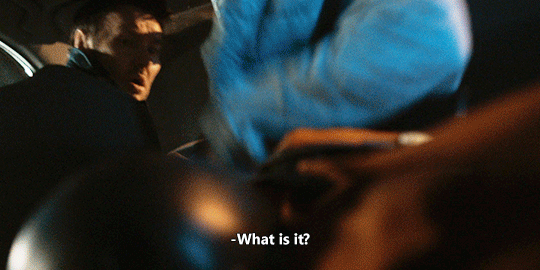



#Dark Matter#apple tv#whump#anaphylaxis#anaphylactic shock#epipen#self-administer#1x06#allergy#nut allergy#food allergy#Joel Edgerton#Oakes Fegley#my gifs#my edits#allergic reaction#allergies
54 notes
·
View notes
Text
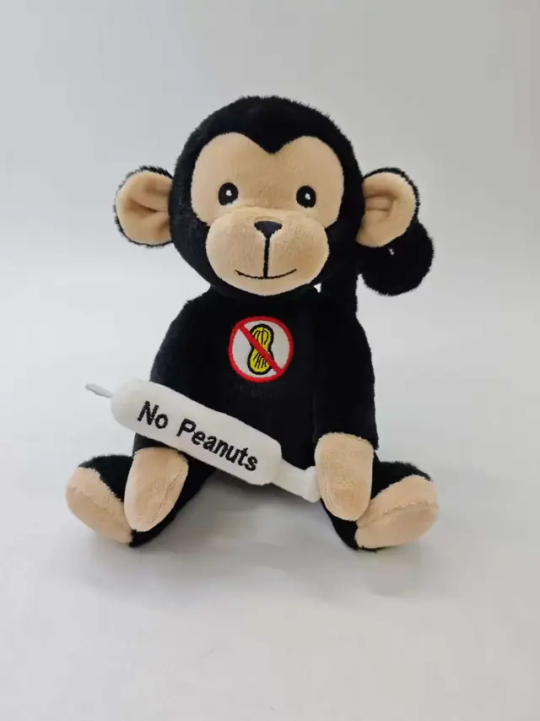
Meet Mel the Monkey 😁
My nephew has a severe peanut allergy and was the inspiration for Inclusive Animals!
When my children were born, I wanted to educate them about allergies but it felt there was nothing out there to help do this through play (which is how children learn best!)
The idea of a plush toy range came to me about 6 months ago, and I have been building the range since then.
The plan is to launch character books after the successful plush toy launch in the first half of his year.
If you are interested in supporting the Kickstarter, please sign up for updates on the website www.inclusiveanimals.com 😁 Please share this with friends and family as well, your support means a lot!
#allergy #monkey #plush #plushies #plushtoy #allergies #peanutallergy #anaphlyaxis #inclusivity #inclusiveanimals #representationmatters #representation
#soft toy#plushie community#plush animals#stuffies#plush toy#plushcore#plushies#inclusiveanimals#kickstarter#allergies#allergy#allergyrelief#peanuts#anaphylaxis#anaphylactic shock
7 notes
·
View notes
Note
What would have been the standard treatment for anaphylaxis in the 1950s? Was epinephrine the standard alongside anti-histamines or had that not been figured out yet?
This was a surprisingly difficult thing to figure out. It wasn't in any of my books, but I was able to find some info online.
Anaphylaxis was first described in the scientific literature in 1906. It was known very soon after this that histamine injected into animals could create an anaphylaxis-type reaction, leading to the understanding of anaphylaxis as a histamine response.
By some time in the 1920s, asthma (and somewhat later anaphylaxis) was being treated with self-injected epinephrine. Honestly I could not find why they had decided to do this, but it worked great.
The first antihistamines went on the market in 1937, and due to the understanding of anaphylaxis as a histamine problem, were probably used pretty quickly for anaphylaxis, though in the 1940s they were marketed more for prevention of anaphylaxis, not necessarily treatment.
By the late 1940s, corticosteroids were introduced and began being used for allergies, allowing anaphylaxis to be treated in much the same way it is today.
So to answer your question, by the 1950s, all three common medication classes used to treat anaphylaxis were in existence, and as far as I could find were being used almost the same way they are today.
29 notes
·
View notes
Text
How tragic! The heart attack was reportedly triggered by a freak accident. According to The Mirror, a bee stung Kapur in the mouth during the polo match, sending him into anaphylactic shock...💔
#anaphylactic shock#sunjay kapur#rest in Peace#bee allergy#british royal family#brf#british royalty#polo match
4 notes
·
View notes
Text
Can we talk more about how having severe allergies puts mortal fear into your soul at a young age?
Like "hey kid I know you're like five, but your body has a design flaw where if you eat (or sometimes even share a space with) {allergen} you essentially drown on land, and instead of water rushing into your airways, your body turns against you, tongue and throat swelling until breathing is completely cut off. You're surrounded by oxygen, yet it's completely inaccessible. Only way to *temporarily* keep that from happening is to stab yourself in the thigh with a needle full of panic chemicals. Also avoiding your allergen is mostly on you because restaurants won't think twice about frying potential allergens in the same oil as the goddamn fries (or worse, they use an oil made from your allergen), the folks bringing potluck dishes don't provide listed ingredients (and you shouldn't trust their word alone), and your allergen shows up in unexpected places because nobody thinks about this stuff if their literal life isn't on the line. Have fun with that!"
What in the Junji Ito Clive Barker David Lynch horrific fuck is this body/psychological horror shit
#allergies#anaphylactic shock#anaphylaxis#allergy#this is mostly my personal experience with having a peanut and shellfish allergy#tw allergic reaction#tw allergies#epipen#i can't even eat chinese food because they use so much fucking shrimp it's not worth risking#funny story i didn't know i was allergic to shellfish until college#seafood looked gross#i got allergy testing my freshman year to see if I'd maybe outgrown my peanut allergy but NOPE#still allergic but also surprise! bonus allergy#my autistic pickiness saved my life#i didn't have an epipen growing up because we didn't have insurance#sooooooooooooooooooo that was fun#thank fuck i never needed one because when your life depends on it you try to be fucking careful#but still#yeah i just think we should talk about this more
6 notes
·
View notes
Text
anaphylactic shock would be such a good name for a superhero or like super power
like that’s literally a pokémon move wdym
2 notes
·
View notes
Text
I got allergies on the brain today so I'm gonna keep talking about them
My favorite foods from the ages of 2-4 were shrimp and those lil fruit cocktail cups (like pears, peaches, and cherries mixed together)
When i turned five, the doctor ordered an allergy test because I was having mystery reactions (reactive eczema + allergic asthma mix). What were the top three allergies from that test you might ask?
1. Shellfish. In fact, all fish! Any living sea creature was supposed to put me straight into anaphylaxis (it already had been, albeit slowly).
Suggestion from doc: cut it out completely, it will get worse with exposure.
2. Peaches, which also was supposed to put me into anaphylaxis. This later became any and all stone fruits giving minor-moderate reactions (made me think papaya was spicy!).
Suggestion from doc: you guessed it! Cut it out, it will get worse with exposure!
3. Horses, my favorite animal at the time (horse girl). Which also would have put me where? STRAIGHT INTO FUCKING ANAPHYLAXIS.
Suggestion from doc: never let a horse or anyone who has touched a horse within a week even come near me, as I *will* die.
So my mother had to look at her five year old, and not only tell her that her two biggest safe foods were off the table, but that all of the backups were too. And on top of it, she would *not* be allowed to ever ride the animal that was her first ever hyperfixation because it would ✨️kill her horribly✨️!
#food allergies#allergic asthma#allergies#anaphylactic shock#text post#text#shitpost#permanentbottombunk
2 notes
·
View notes
Text
Anaphylactic shock (verse)
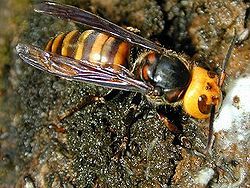
wasp
Early afternoon today
The bush tangled in the trees
I was mowing.
While working mindlessly
I felt a sharp pain.
The tip of my left ring finger.
It was probably a bee that stung me.
Especially common in wasps
When you get stung a second time
There is concern about anaphylactic shock.
the body's immune system overreacts
You may die from shock.
About 30 years ago,
I was being harshly baptized by wasps.
Shock death is possible even if there is a gap in time.
It has now been about 4 hours since I was stung.
Other than occasional tingling, I haven't noticed any abnormalities.
--God Saved my life?
(2019.06.08)
アナフ���レクシー・ショック(韻文)
今��昼下がり
木々に絡みつくヤブガラシを
刈っていた。
無心に作業していたところ
ピキッと痛みが走った。
左手の薬指の先端。
刺したのはたぶんミツバチ。
特にスズメバチに多いが
2度目に刺されると
アナフィレクシー・ショックが心配される。
体の免疫系が過剰反応し
ショック死することがある。
私は以前30年ほど前に
スズメバチの手荒い洗礼を受けている。
時間が開いていてもショック死はありうる。
今は刺されて4時間ほどになるが
たまにチクッとする以外特に異常は出ていない。
――命拾いか。
4 notes
·
View notes
Text
Salad tried to kill me, but I survived 😌
0 notes
Text
Anaphylactic Shock Following Black Ant Sting: A Case Report by Deng Jingqi by Journal of Clinical Case Reports Medical Images and Health Sciences
Abstract
We present a case of a 36-year-old male patient who developed anaphylactic shock following a black ant sting. The patient exhibited respiratory depression and subsequent respiratory arrest, which posed a diagnostic challenge. The proximity of the patient to a large comprehensive hospital facilitated timely management. However, the lack of availability of essential emergency medications, such as adrenaline, in resource-limited settings like Sierra Leone hinders prompt treatment. This case emphasizes the potential underestimation and delayed intervention in cases of anaphylactic shock caused by encounters with large ants, which are not uncommon.
Keywords: Anaphylactic shock, Black ant bite, Respiratory depression, Resource-limited settings
Introduction
Anaphylactic shock resulting from encounters with insects has been reported in various regions worldwide, including the Americas, Australia, Asia, and Europe, but limited reports exist from West Africa. This case highlights the challenges in promptly diagnosing anaphylactic shock, particularly when respiratory depression and respiratory arrest occur. The patient's proximity to a large comprehensive hospital played a crucial role in facilitating immediate medical intervention. However, the unavailability of essential emergency medications, such as adrenaline, in resource-limited settings like Sierra Leone can lead to delayed treatment. It is important to recognize that cases of anaphylactic shock caused by encounters with large ants may be underestimated and not receive timely medical attention.
Case
A 36-year-old Chinese male patient presented to the Emergency Department of Sierra Leone China Friendship Hospital at 12:47, Dec 2ed, 2022. The patient reported being bitten on the toe by a large black ant (Figure 1) around 12:00. Approximately 10 minutes after the bite, the patient collapsed and complained of dizziness and difficulty breathing. On examination, his blood pressure was 83/55 mmHg, heart rate was 90 beats per minute, and oxygen saturation was 85%. The patient appeared cyanotic, and decreased breath sounds were auscultated bilaterally in the lungs. There were no visible skin lesions at the site of the ant bite. At 13:06, the patient became confused, and his oxygen saturation further declined. By 13:15, he experienced respiratory arrest. Patient's past medical history is unremarkable and there are no known drug allergies.
Resuscitation measures were promptly initiated. At 13:00, a 500 mL Ringer's lactate solution was administered to establish intravenous access. Intravenous dexamethasone 10 mg was given at 13:10, followed by manual bag-valve-mask ventilation and intravenous (IV) administration of adrenaline 0.3 mg at 13:15. Additionally, intramuscular promethazine 12.5 mg was administered at 13:20. The maximum heart rate recorded following adrenaline administration was 180 beats per minute. By approximately 13:20, the patient regained spontaneous breathing, his complexion improved, and he regained consciousness. On reassessment, his blood pressure was 125/85 mmHg, and heart rate was 95 beats per minute. The patient remained stable and asymptomatic for one day and was subsequently discharged.
The large ant that stung the patient.
Discussion
The patient's presentation is consistent with anaphylactic shock caused by an allergic reaction to the black ant bite. While the standard symptoms of anaphylactic shock include skin symptoms, respiratory symptoms, cardiovascular symptoms, gastrointestinal symptoms, neurological symptoms, and general symptoms, this case exhibited some atypical features. These atypical symptoms may not be immediately recognized as anaphylaxis without a high index of suspicion. In this case, the patient also reported nausea, profuse sweating, and a feeling of impending doom, which are consistent with the general symptoms of anaphylaxis. Additionally, the patient exhibited cyanotic skin, indicating compromised oxygenation, which can be observed in severe anaphylactic reactions.1
In the management of anaphylactic shock, the use of adrenaline is considered a cornerstone of treatment. Adrenaline acts as a potent vasoconstrictor, bronchodilator, and cardiac stimulant, effectively counteracting the severe systemic vasodilation, bronchoconstriction, and cardiovascular collapse associated with anaphylaxis. Intramuscular (IM) administration is the recommended initial route for adrenaline administration in the management of anaphylaxis, especially in non-hospital settings or when IV access is not readily available. The preferred site for IM injection is the mid-anterolateral aspect of the thigh.2 In this case, the decision to administer adrenaline via IM injection may have provided a faster route of delivery. At the onset of the patient's presentation, there was no initial diagnosis of anaphylactic shock, and the availability of adrenaline was not established. The subsequent administration of adrenaline via IV route resulted in an increased heart rate.
The limited resources in Sierra Leone, including the unavailability of adrenaline, further complicated the management of this case. Its absence in the hospital posed challenges in providing immediate and appropriate treatment. The use of alternative medications, such as intravenous dexamethasone and supportive measures like manual bag-valve-mask ventilation, was necessary in this situation. It is essential to increase awareness and preparedness among healthcare professionals in managing anaphylactic reactions, particularly when presented with atypical symptoms such as respiratory depression and respiratory arrest.3, 4 This case emphasizes the need for education and training to ensure early recognition and prompt management of anaphylactic shock, even in resource-limited settings.
Conclusions
This case highlights the challenges in promptly diagnosing and managing anaphylactic shock, particularly when respiratory depression and respiratory arrest occur while without skin injury or symptom. Prompt recognition and immediate medical intervention are crucial in preventing adverse outcomes. Healthcare professionals should be prepared to handle anaphylactic reactions, even in resource-limited settings, by ensuring the availability of essential emergency medications. Increased awareness and education can improve the recognition and timely treatment of anaphylactic shock caused by encounters with large ants.
Disclosure: The authors declare no conflicts of interest and received no funding for this report.
#Anaphylactic shock#Black ant bite#Respiratory depression#Resource-limited settings.#Resource-limited settings#Journal of Clinical Case Reports Medical Images and Health Sciences.
0 notes
Video
youtube
Is There A Doctor On Board?!?
0 notes
Text
for someone who has never had to use this or other medical needles, can someone please give me clearer detail on how hard "slam"/"swing and push firmly" means? should it change based on clothing worn, body weight, adult, senior, or child?
Anyone can help!

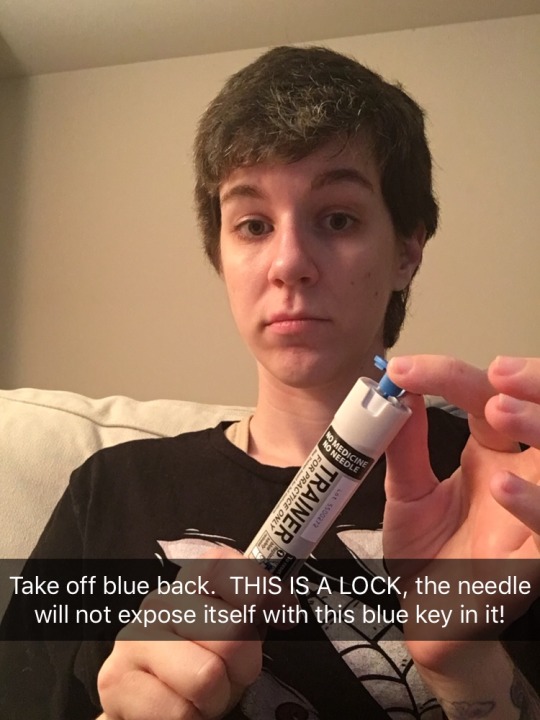
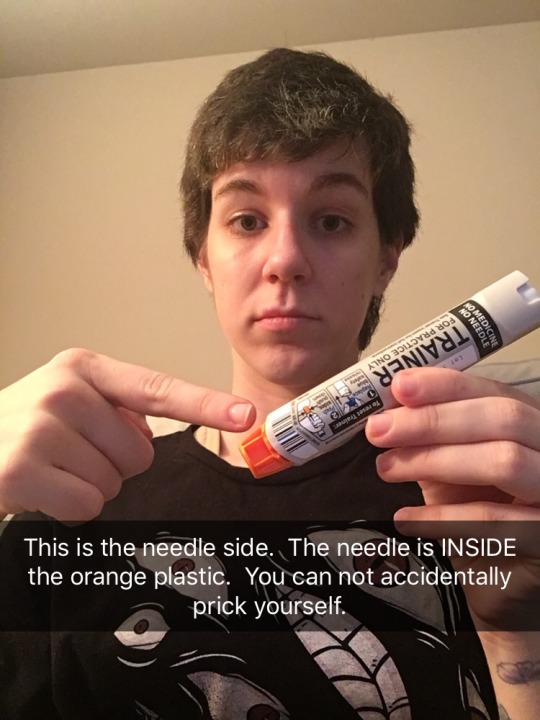

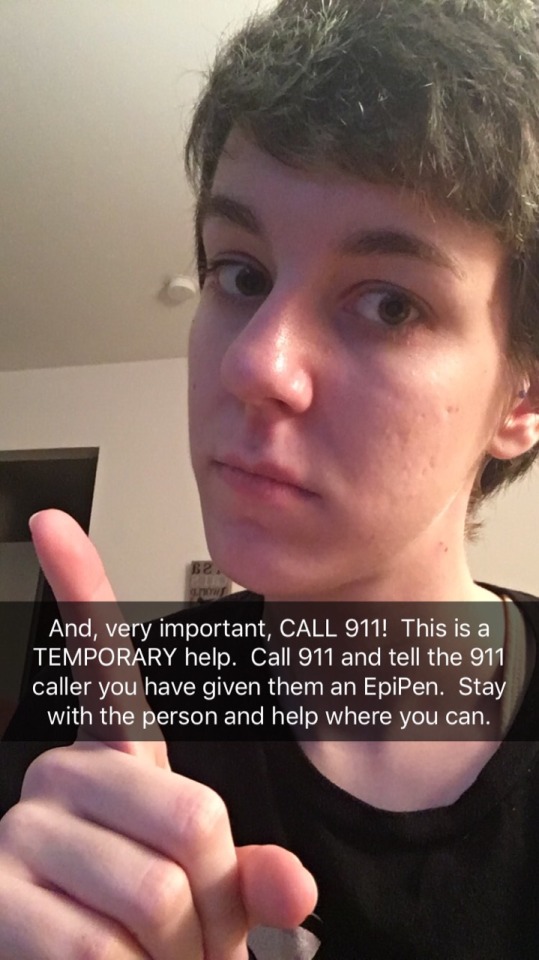
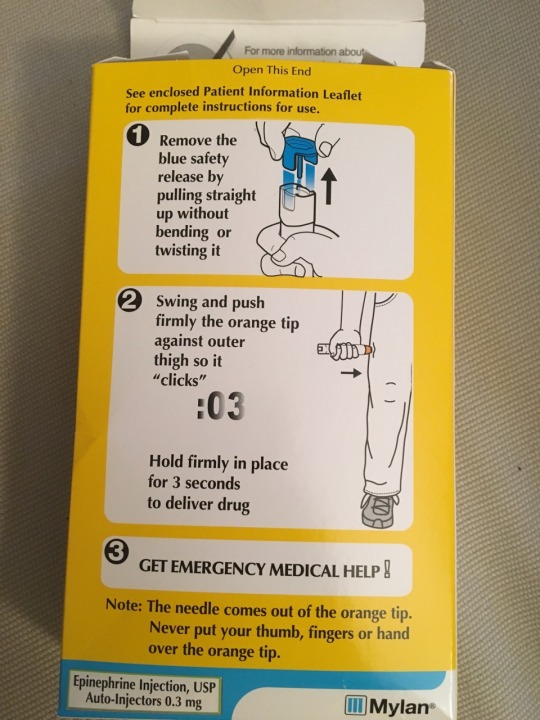
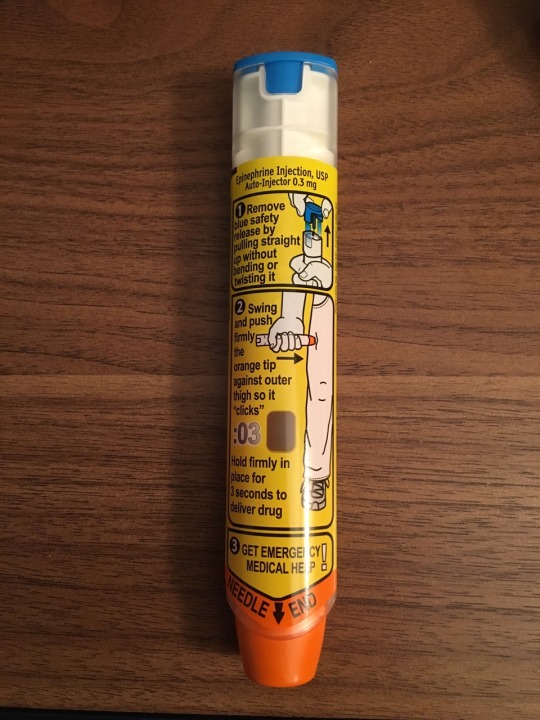
(Real pen the last picture)
It is important for EVERYONE to know how to help ANYONE. Not everyone can give them selves their medicine under every circumstance. Be educated, help out.
In the last year, i have gotten about five new violent allergies from foods i used to be able to eat. Next time i eat a fruit, my throat could close. I may not be able to inject myself. My boyfriend and i played with my trainer pen for like 30 minutes. He knows how to inject it. I know how. This is important.
238K notes
·
View notes